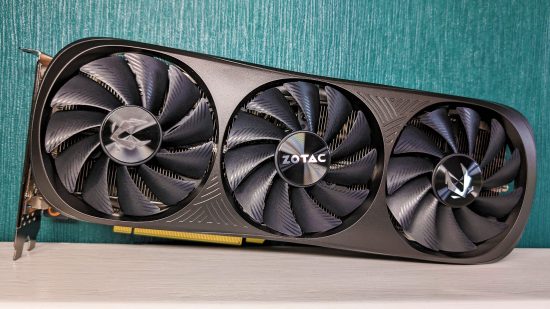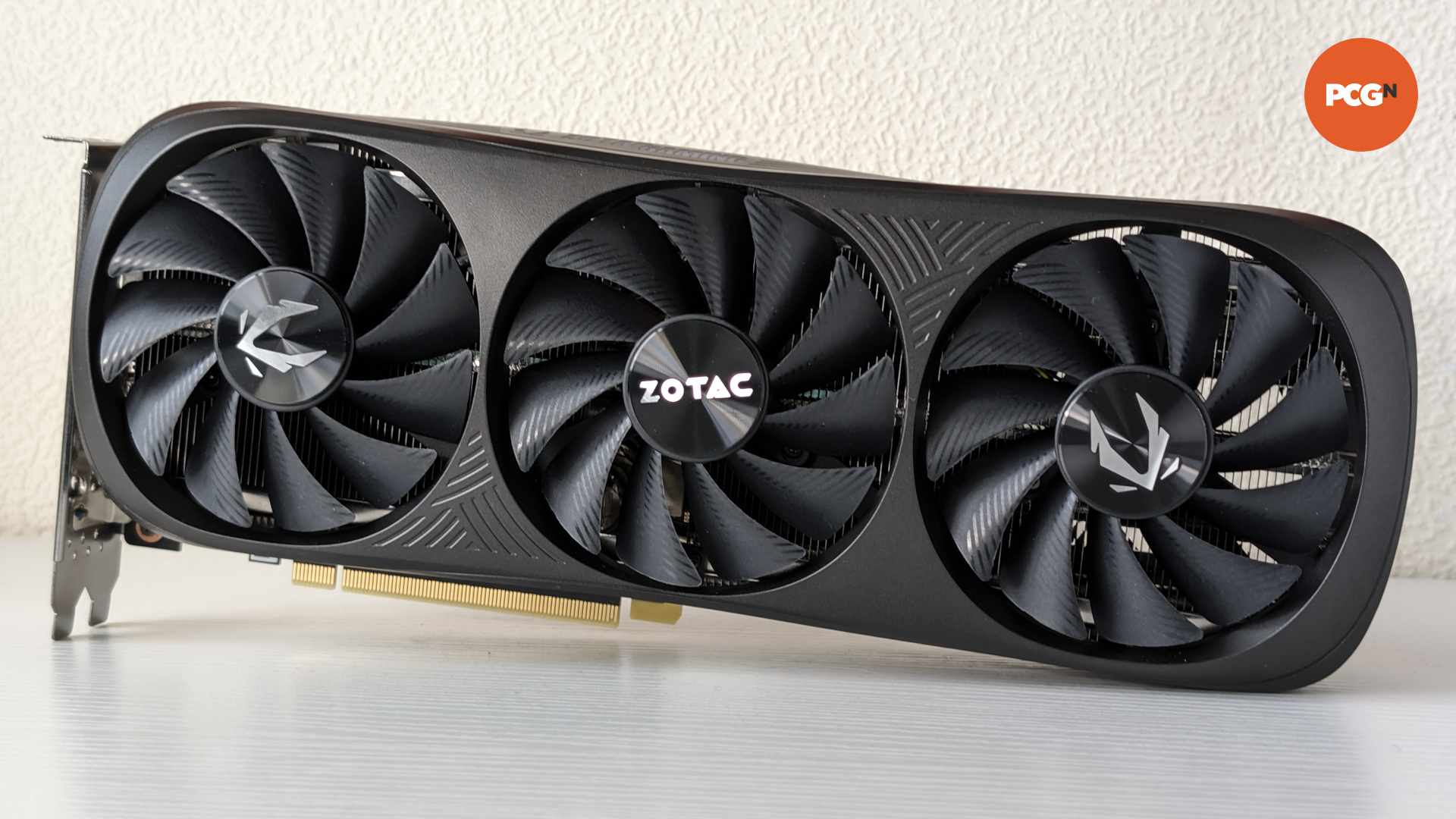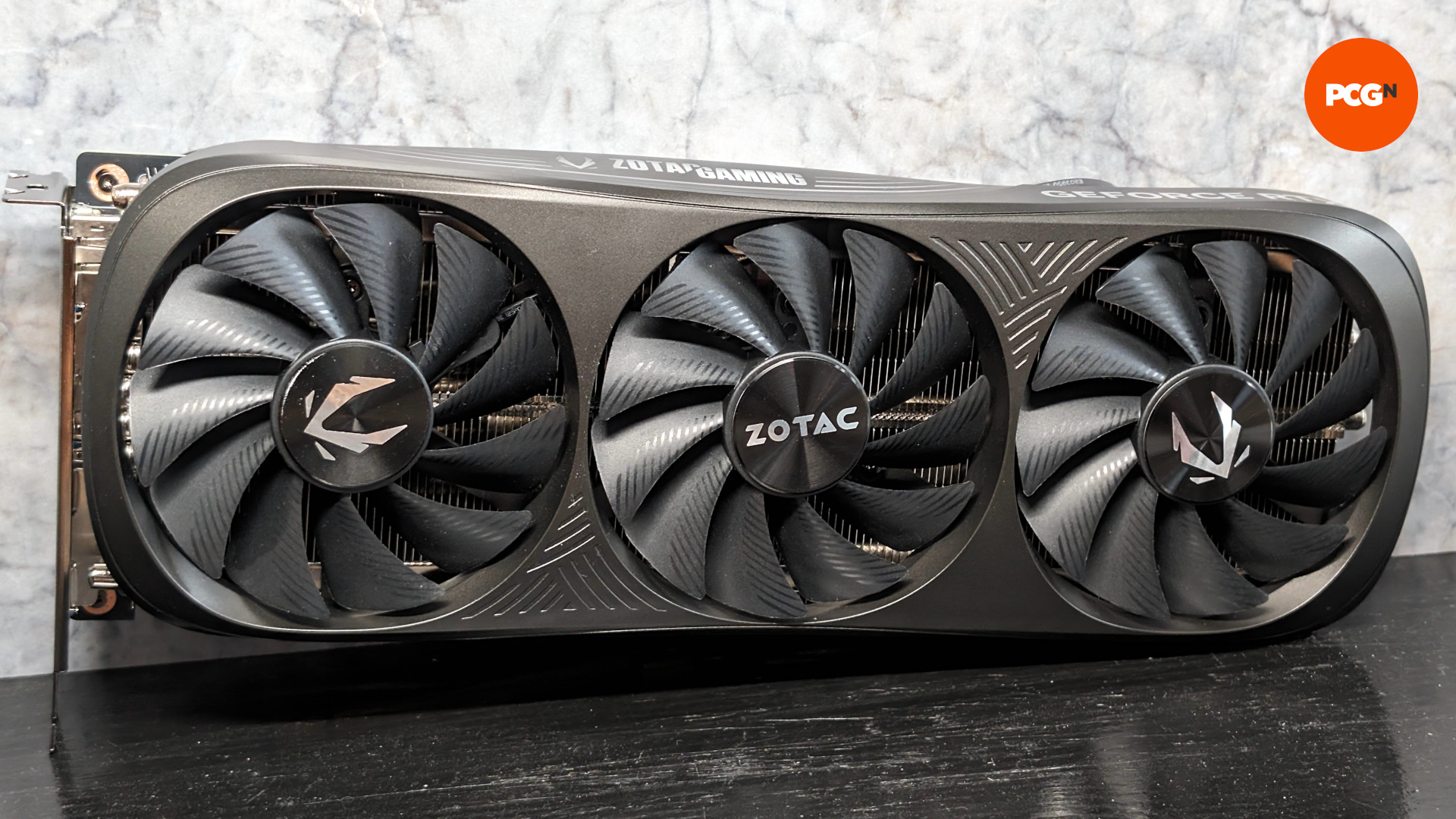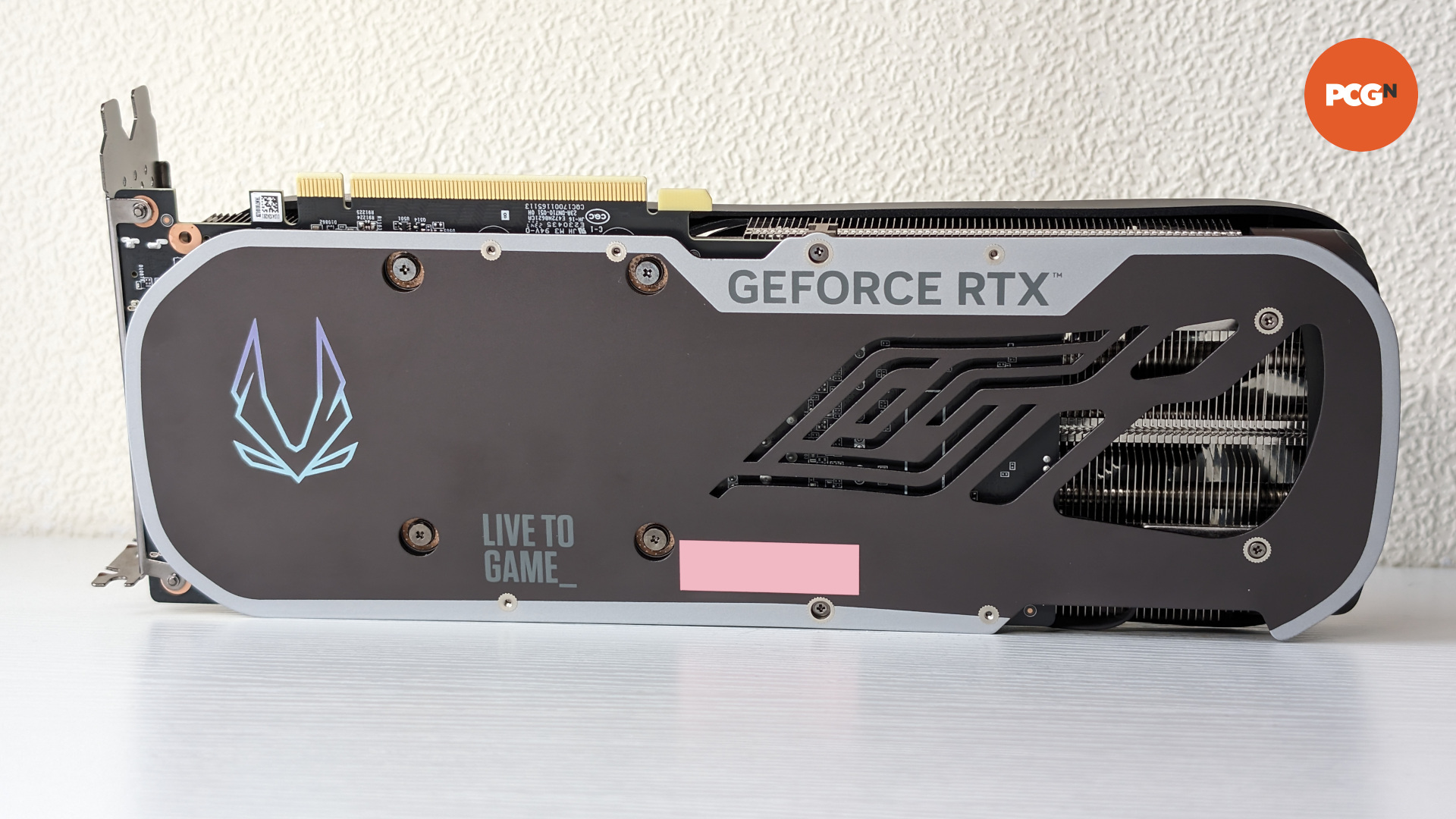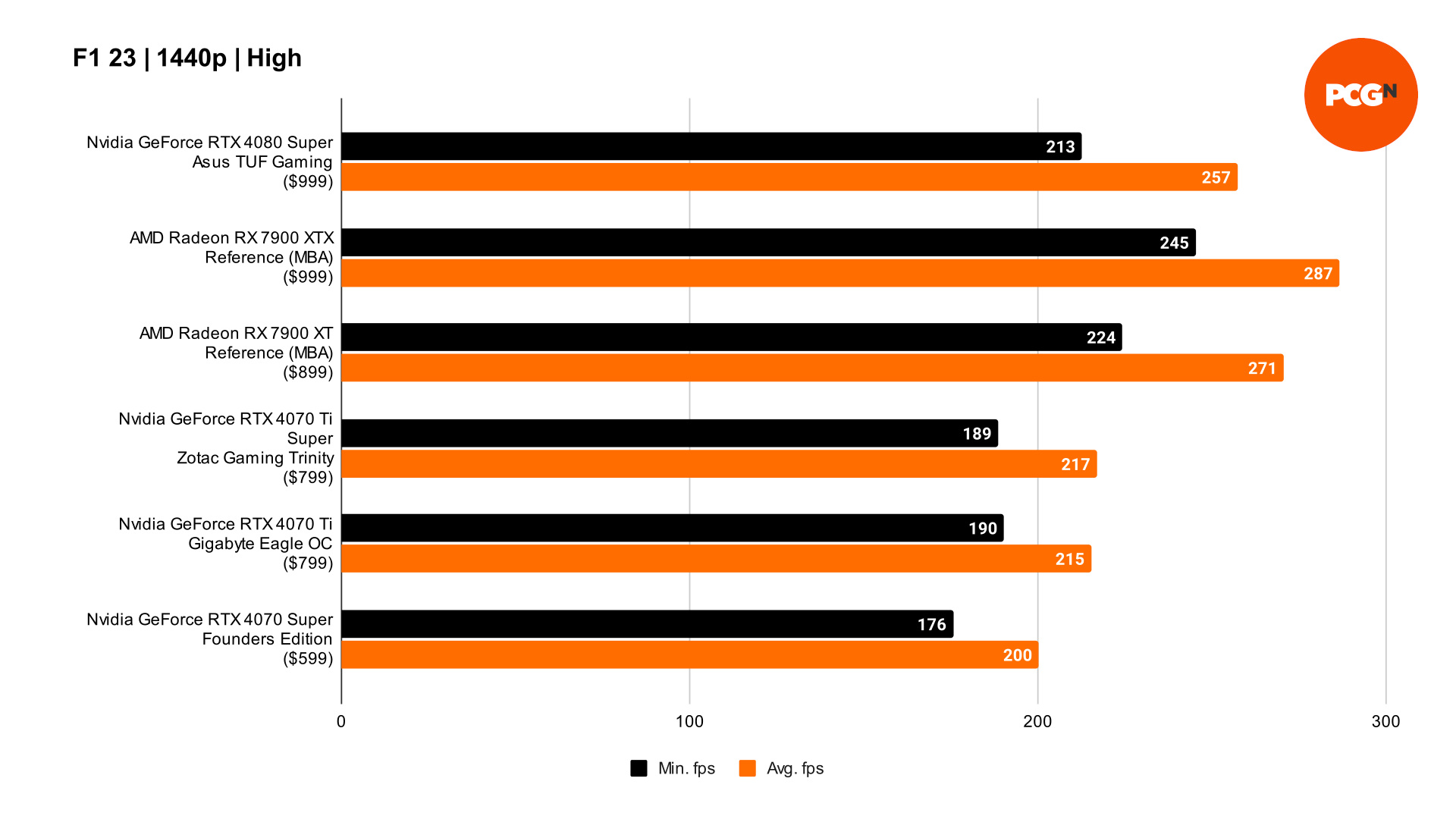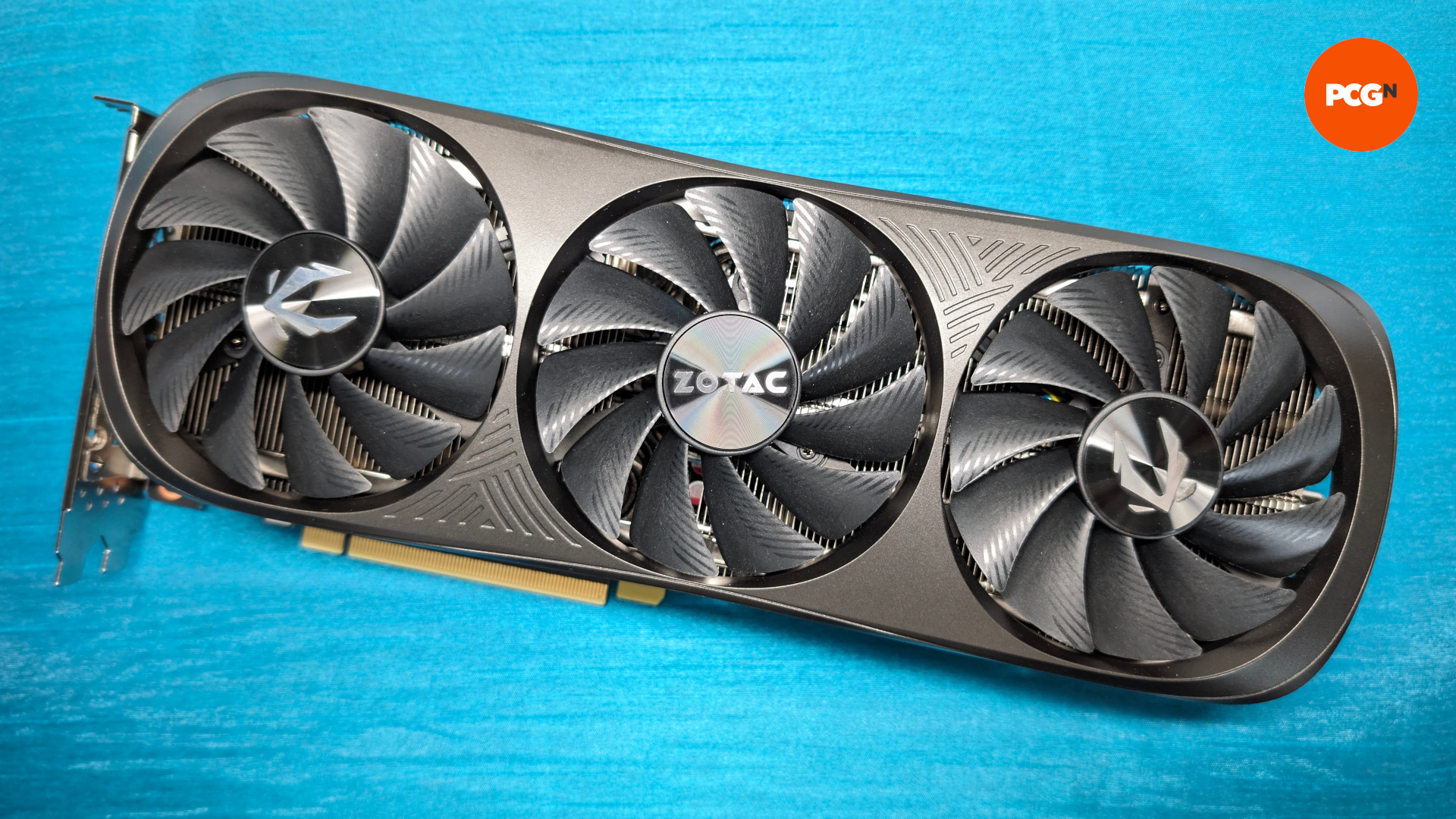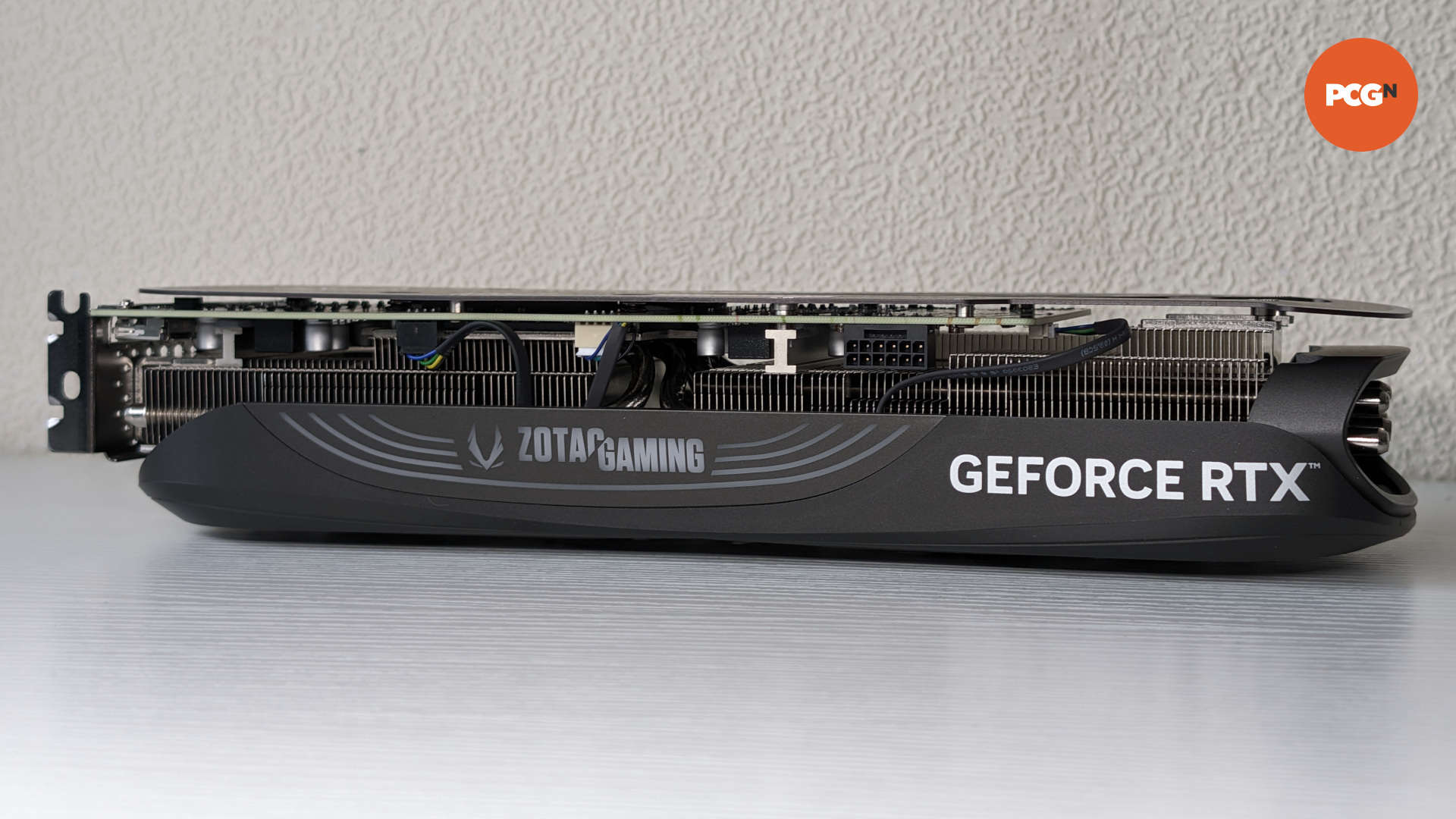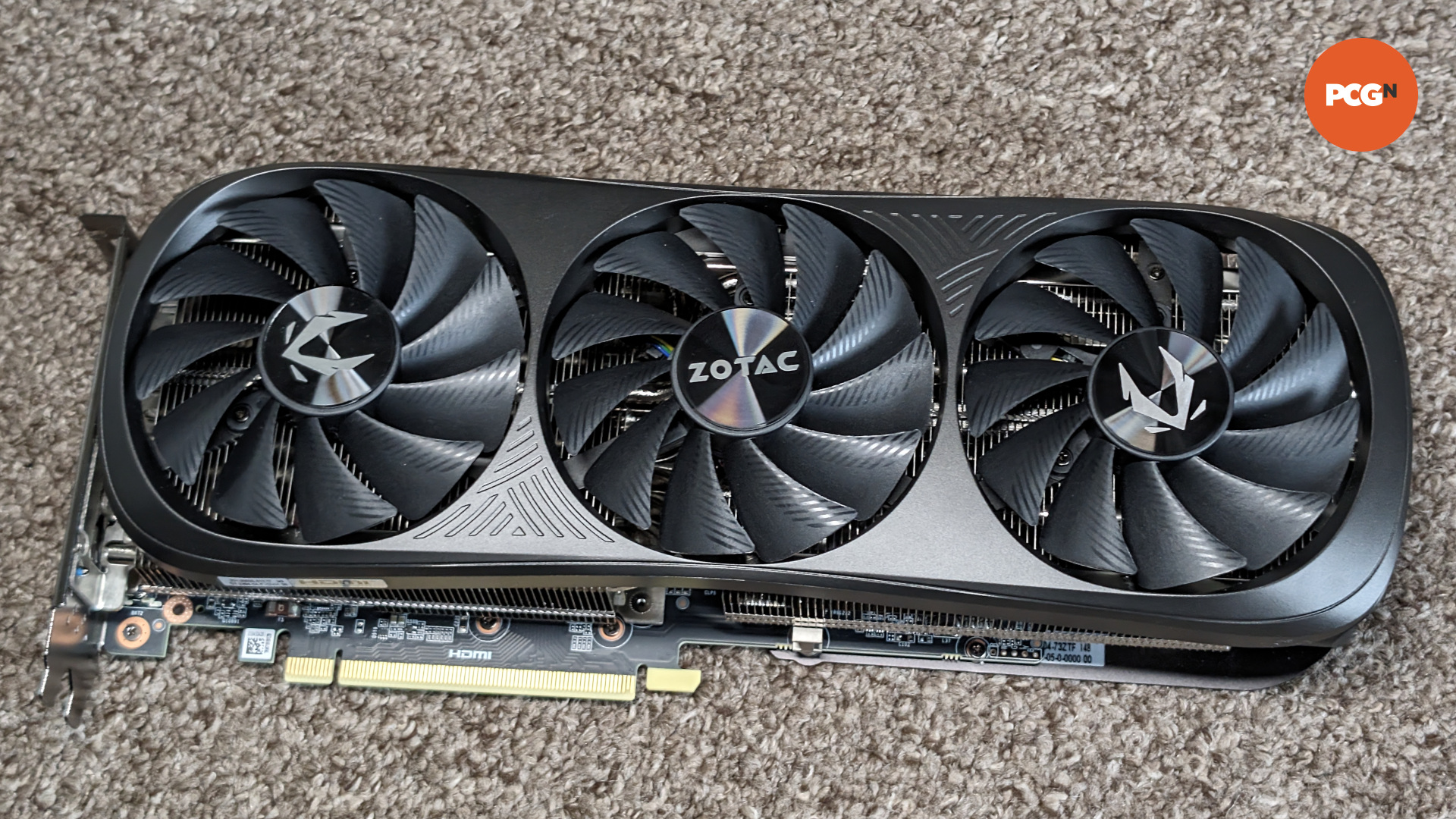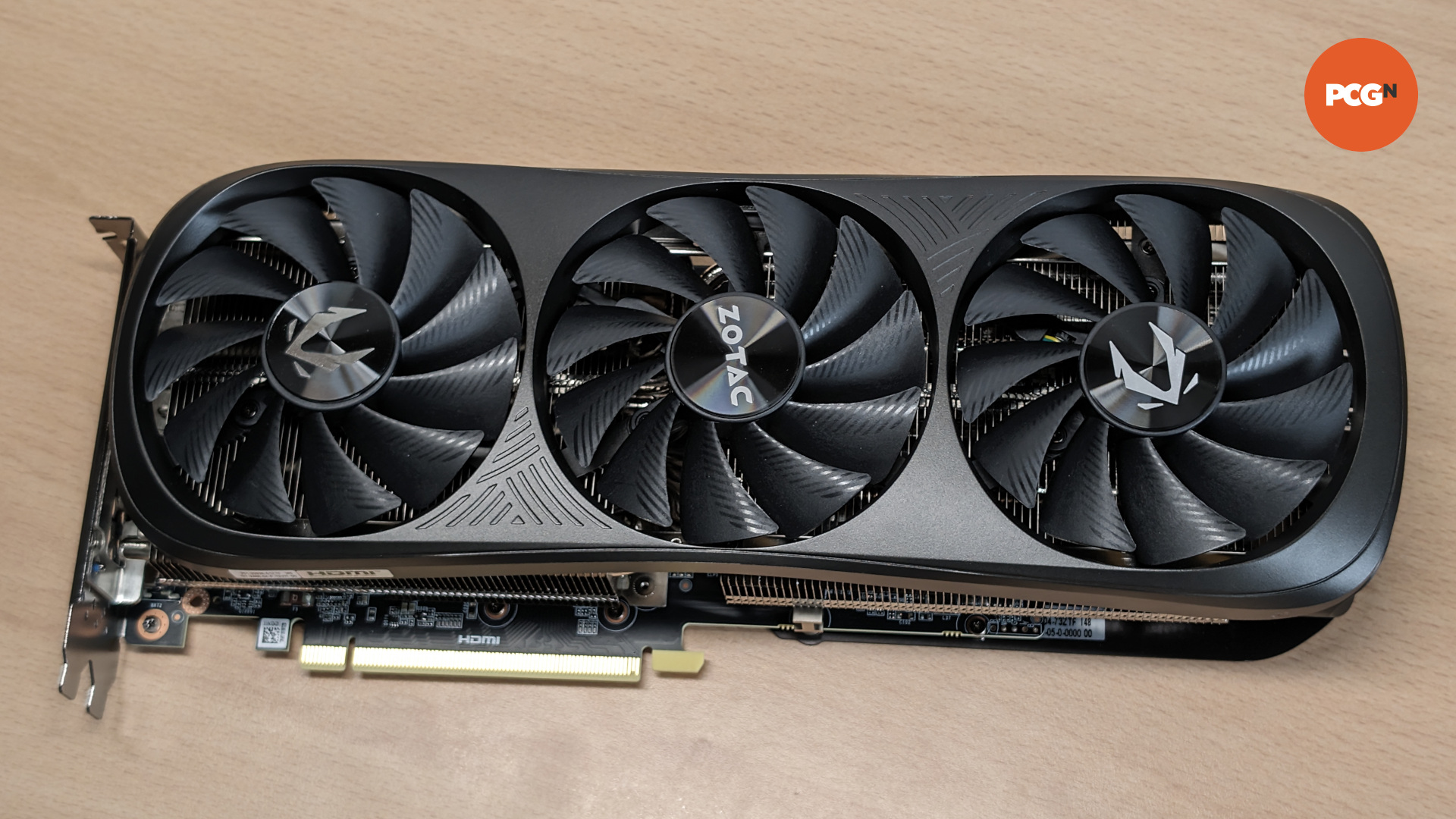Our Verdict
The Nvidia GeForce RTX 4070 Ti Super is the least remarkable of its Super siblings, but it still provides solid performance at 1440p and even 4K, thanks to its 16GB of VRAM, particularly with ray tracing enabled. Even so, its value isn't strong enough to put either the RTX 4070 Super or RX 7900 XT out of the picture, making it a graphics card that’s more worth considering than an absolute must-buy.
- Best RT performance under $800
- 16GB GDDR6X VRAM
- Suitable for QHD and 4K gaming
- Only marginally faster than RTX 4070 Ti
- RTX 4070 Super value is stronger
- Beaten by RX 7900 XT outside of RT
The Nvidia GeForce RTX 4070 Ti Super finds itself fulfilling the stereotype of the middle child, with its newfound advantages via its refresh feeling more muted and overshadowed in comparison to its siblings. There are welcome improvements to be found in this graphics card, compared to the original RTX 4070 Ti, but it’s hard to escape the feeling that it needs a bit extra to push it from being merely good to being properly great.
Our Nvidia RTX 4070 Ti Super review has been some time in the making, following issues with the initial sample we received. Thankfully, these issues are now resolved following the procurement of a different, problem-free sample, and we have been putting it through its paces for the past few weeks, assessing its worthiness to join our best graphics card list.
Why you can trust our advice ✔ At PCGamesN, our experts spend hours testing hardware and reviewing games and VPNs. We share honest, unbiased opinions to help you buy the best. Find out how we test.
RTX 4070 Ti Super specs
Like the other RTX 40 Super graphics cards, the RTX 4070 Ti Super enjoys a bump to its core counts and clock speeds. That’s not all, however, as it also packs a more powerful GPU, more VRAM, and a wider memory bus to boot. While this all sounds exciting on paper, the situation is decidedly more reserved when this new technical makeup is put through its paces.
| RTX 4070 Ti Super | RTX 4070 Ti | |
| GPU | AD103 | AD104 |
| CUDA Cores | 8,448 | 7,680 |
| RT Cores | 66 | 60 |
| Tensor Cores | 264 | 240 |
| Base clock | 2,340MHz (2.34GHz) | 2,310MHz (2.31GHz) |
| Boost clock | 2,610MHz (2.61GHz) | 2,610MHz (2.61GHz) |
| VRAM | 16GB GDDR6X | 12GB GDDR6X |
| Memory bus width | 256-bit | 192-bit |
| TDP | 285W | 285W |
| MSRP | $799 | $799 |
Given that the now outgoing RTX 4070 Ti was already working with the full AD104 GPU, Nvidia had little choice but to upgrade the RTX 4070 Ti Super to AD103 if it wished to increase core counts. As a result, the new graphics card enjoys a 10% uplift in CUDA, RT, and Tensor core counts, all of which undoubtedly make the biggest contribution to a higher level of performance.
Looking at clock speeds, the RTX 4070 Ti Super has the least inspiring boost versus the already small bumps seen on both the RTX 4070 Super and RTX 4080 Super. Its boost clock remains unchanged at 2,610MHz (2.61GHz) and its base clock has only increased by a mere 30MHz, bringing it to 2,340MHz (2.34GHz). It’s impossible to isolate this change outside of the aforementioned core count increases, but it’s safe to say that 30MHz doesn’t dramatically push the performance needle.
Lastly, the RTX 4070 Ti Super gets a welcome boost to memory bandwidth. As part of the shift from AD103 to AD102, the 192-bit memory bus is swapped out for a wider, more accommodating 256-bit interface, helping to push the memory bandwidth up to a new maximum of 672GB/s (up from 504GB/s). VRAM capacity has also increased to 16GB, matching the RTX 4080 Super. These qualities leave it well-equipped for gaming at both 1440p and 4K, with much less room for stuttering via memory saturation compared to the RTX 4070 Ti.
RTX 4070 Ti Super benchmarks
In this review, we’ll be discussing the details of our RTX 4070 Ti Super benchmarks captured at 1440p. However, we have also captured data at 1080p and 4K, which we’ll provide links to shortly.
Our findings are split into separate sections for standard rasterization and ray tracing performance, as well as the impact of DLSS 3. Each benchmark was run three times to produce an average final result, discarding anomalous entries.
| Graphics card test PC specs | |
| GPU | Zotac Gaming GeForce RTX 4070 Ti Super Trinity Black Edition |
| Driver | GeForce Game Ready (551.23) |
| OS | Windows 11 Pro (22631.2861) |
| Motherboard | Asus TUF Gaming X670E-Plus (BIOS 2214) |
| CPU | AMD Ryzen 7 7800X3D |
| CPU Cooler | Corsair iCue H150i Elite Capellix XT |
| RAM | Corsair Vengeance 32GB (2 x 16GB) DDR5 6,000MHz |
| SSD | Corsair MP700 Pro 2TB |
| PSU | Corsair RMx Shift Series 1000W |
| Case | Corsair 5000D RGB Airflow |
The frame rates discussed below were captured using the Zotac Gaming GeForce RTX 4070 Ti Super Trinity Black Edition, as there isn’t a Founders Edition (as with the RTX 4070 Ti). It serves as a reference design, with no overclock, and hits the $799 MSRP. We’ve paired it with the best gaming CPU on the market, the AMD Ryzen 7 7800X3D, to mitigate any potential bottlenecks.
RTX 4070 Ti Super ray tracing benchmarks
Averaging the results across our ray tracing benchmark suite, the RTX 4070 Ti Super pulls ahead of the RTX 4070 Ti in average frame rates to the tune of 5%. It should be noted that our point of comparison, the Gigabyte Eagle OC, does have a small 15MHz overclock compared to the reference card design, but this shouldn’t sway the frame rate massively versus stock examples.
This 5% uplift does little to shift the standing of the RTX 4070 Ti Super compared to its most closely priced competitor, the RX 7900 XT, since the RTX 4070 Ti already enjoyed a comfortable lead over it. Nonetheless, it does still improve its value, with Nvidia’s cheaper GPU outpacing AMD’s by 15% on average across our suite, while costing $100 (11%) less, when you compare MSRPs. The RTX 4070 Ti Super appears all the more favorable versus the RX 7900 XTX too, beating it by 5% in average frame rates and costing $100 (20%) less.
While the RTX 4070 Ti Super appears to offer better value than its AMD competition, the landscape becomes more complicated when you add its Nvidia siblings to the picture. While the RTX 4070 Ti Super does run 18% faster than the RTX 4070 Super, it’s much more expensive, with $200 (33%) between the prices of the two. Conversely, the RTX 4070 Ti Super performs about 18% slower than the RTX 4080 Super but is $200 (20%) cheaper.
With all these metrics in mind, the RTX 4070 Ti Super doesn’t impress as much as its other Super siblings in terms of its refreshed capabilities or value. While it’s a match for the RTX 4080 Super in terms of its performance increase, it lacks a similar price reduction to better affect its value. Meanwhile the RTX 4070 Super is a much more powerful card than the RTX 4070, to the point that it’s often uncomfortably close to the original RTX 4070 Ti.
RTX 4070 Ti Super – 3DMark ray tracing benchmarks
The performance snapshot provided by the 3DMark Speed Way benchmark puts the ray tracing capabilities of the RTX 4070 Ti Super ahead of every graphics card, save for the RTX 4080 Super and RTX 4090.
Compared to the RTX 4070 Ti, the RTX 4070 Ti Super increases its score by 16%, escaping from under the shadow of the RX 7900 XTX by a small (5%) margin. While the latter gap broadly manifests itself in our real-world gaming benchmarks once you take all the results into account, though, you can’t say the same for the former gap.
RTX 4070 Ti Super – Avatar: Frontiers of Pandora ray tracing benchmarks
The first game in our suite, Avatar: Frontiers of Pandora, is one of the newest and most demanding examples of ray tracing. Ubisoft’s open-world FPS game tends to produce more favorable ray tracing results for AMD than on average, making it an uphill battle for the RTX 4070 Ti Super, though it still manages to hold its own.
With an average frame rate of 78fps, the RTX 4070 Ti Super is within the margin of error versus the 79fps produced by the RX 7900 XTX, and it’s a comfortable 8% ahead of the RX 7900 XT. It’s also the only Nvidia GPU, save for the RTX 4080, that manages to produce a minimum frame rate over 60fps, with its forebear the RTX 4070 Ti falling just short.
RTX 4070 Ti Super – Cyberpunk 2077 ray tracing benchmarks
Moving to Night City, Cyberpunk 2077’s streets have classically proven to be a stronghold for Nvidia, and the RTX 4070 Ti Super is a big beneficiary here. Once again, it finds itself in second place overall, behind the RTX 4080 Super, but this time it’s miles ahead of its AMD competition.
The RX 7900 XT and XTX find themselves towards the bottom of the performance chart, falling behind the much less expensive RTX 4070 Super. Compared to the RTX 4070 Ti Super, the performance gap versus the Radeon graphics cards clocks in at a staggering 15fps (42%) against the 7900 XT, and a still wholly uncomfortable 11fps (28%) against the 7900 XTX.
While these results are strong for the RTX 4070 Ti Super, though, it’s still incapable of achieving an average frame rate of 60fps. However, this will become all the more achievable with the full suite of DLSS 3 technologies at its disposal, which we’ll come to later.
RTX 4070 Ti Super – F1 23 ray tracing benchmarks
It’s in F1 23 that we see both the RX 7900 XTX and XT strike back against the RTX 4070 Ti Super most significantly. On the tarmac, the AMD GPUs either match or exceed the Nvidia GPU in terms of frame rate, but neither is enough to mitigate their higher MSRP. However, it should be noted that both the 7900 XT and XTX are regularly discounted, so it’s worth shopping around.
Both the RTX 4070 Ti and RX 7900 XT achieve an 89fps average frame rate in this test, while the RX 7900 XTX enjoys an 8fps (8%) lead over both the former GPUs. There are all great results, to be sure, but the greater value undoubtedly lies with the GeForce graphics card, given its significantly cheaper price.
RTX 4070 Ti Super – Returnal ray tracing benchmarks
Ray tracing in Returnal proves a surmountable task for every graphics card in our charts, with the RTX 4070 Ti Super clocking in with an average frame rate of 97fps, while the RTX 4070 Super sets a performance floor of 85fps.
Compared to the RTX 4070 Ti, the RTX 4070 Ti Super produces a meager 3fps (3%) uplift, which helps to cement its lead over the RX 7900 XT and XTX, which trail by 11fps (11%) and 5fps (5%) respectively.
RTX 4070 Ti Super rasterization benchmarks
Examining RTX 4070 Ti Super rasterization performance serves to reinforce the notion that while Nvidia may rule the roost when it comes to ray tracing, AMD Radeon graphics cards are generally the best way to go if RT doesn’t interest you.
Looking across our test suite, the RTX 4070 Ti Super is 15% slower than the RX 7900 XT on average in these tests, with the GeForce GPU even further behind the RX 7900 XTX, to the tune of 25%. These performance deltas are more or less in line with the price differences between the graphics cards, which is great news if you’re looking to maximize the bang for your buck in the region of $800-$1,000.
The difference between the RTX 4070 Ti Super and RTX 4070 Ti here remains as tepid as it did in ray tracing, at just 5%. Unfortunately, though, gaps between the RTX 4070 Super and RTX 4080 Super are narrower, with the RTX 4070 Ti Super performing just 13% faster than the former and 16% slower than the latter. This leaves it feeling less valuable as an all-round performer than its siblings, however slight.
RTX 4070 Ti Super – 3DMark rasterization benchmarks
Take note of all the GPU positions here in this 3DMark benchmark, save for the RTX 4080 Super, as it will remain unchanged as we navigate through the rest of the rasterization graphs below.
The shoe is very much on the other foot this time around, with the RTX 4070 Ti Super playing second fiddle to the RX 7900 XT to varying degrees, while the RX 7900 XTX concerns itself with the more worthy opponent of the RTX 4080 Super.
RTX 4070 Ti Super – Cyberpunk 2077 rasterization benchmarks
Without the dazzling ray-traced neon glow of Night City to light its path, the RTX 4070 Ti Super stumbles in comparison to the RX 7900 XT. The GeForce GPU’s average frame rate falls short of the Radeon’s by 17fps (15%), but each card is undeniably suitable for a high fps experience.
We see the RTX 4070 Ti Super turn in a surprising but welcome 11% improvement over the RTX 4070 Ti here, which feels all the more necessary considering that the RTX 4070 Super was previously nipping at the RTX 4070 Ti’s heels.
RTX 4070 Ti Super – F1 23 rasterization benchmarks
Without ray tracing to hold them back, the RX 7900 XT and XTX leave the RTX 4070 Ti Super firmly in the dust in F1 23. The difference in performance between the Radeon and GeForce graphics cards here is simply staggering, with a massive 56fps separating them at best and 71fps at worst.
Worse still for the RTX 4070 Ti Super, its 217fps average frame rate is actually much closer to that of the RX 7800 XT, a card that’s $300 cheaper… that it still can’t beat. For clarity, as the card isn’t included in the charts above, AMD’s $500 GPU pumps out 228fps. This is the most egregious example of the value of the RTX 4070 Ti Super being brought into question, with the RTX 4070 Super appearing all the stronger in this regard.
RTX 4070 Ti Super – Returnal rasterization benchmarks
Returnal shows a bit of a return to form for the RTX 4070 Ti Super following the comparative embarrassment of F1 23, with just 15fps separating it from the RX 7900 XT. However, this difference feels much of a muchness, as every graphics card here is able to achieve fantastic frame rates.
However, value remains a problem with the RTX 4070 Super in the picture, with just 13fps making up the $200 difference between the cards. Finally, compared to the RTX 4070 Ti, the RTX 4070 Ti Super isn’t much faster here, delivering a mild 4% performance increase.
RTX 4070 Ti Super – Total War: Warhammer 3 rasterization benchmarks
As with all the other benchmarks in our standard rasterization suite, Total War: Warhammer 3 sees AMD emerge as the overall victor, while the RTX 4070 Ti Super does its best to not be eclipsed by the long shadow of the Radeon GPUs’ performance. To its credit, though, it does turn in a minimum frame rate over 60fps, unlike the RTX 4070 Ti and RTX 4070 Super.
The respectable 86fps average from the RTX 4070 Ti Super is once again outdone by the RX 7900 XT, leaving the GeForce GPU 10fps (10%) slower. That’s not an overly fantastic result for the Radeon card, given the difference in MSRP, but it nonetheless remains faster than the RTX 4070 Ti Super. Naturally, this becomes a clearer win should you find the RX 7900 XT discounted.
RTX 4070 Ti Super DLSS benchmarks
The value of DLSS 3 in relation to the RTX 4070 Ti and other Lovelace pixel pushers can’t be underestimated, as both Super Resolution and Frame Generation working in tandem can absolutely transform frame rates.
While the difference in performance between the RTX 4070 Ti Super and its siblings remains largely static, DLSS compounds the lead the GPU enjoys versus the RX 7900 XT and XTX in ray tracing, and serves as an equalizer in standard rasterization. It should be noted, however, that this is with the GeForce graphics cards running DLSS 3 while the Radeon cards use FSR 2.
While we’d prefer to test on equal footing, we’re still waiting for Cyberpunk 2077 to receive official FSR 3 support (despite it being announced as an upcoming title back when the feature was launched in 2023). While the adoption rate of FSR 3 into games is finally starting to pick up, it still has a long way to go before it catches up with DLSS 3. Even when that does finally happen, though, the advantage of fidelity in resolution upscaling will remain firmly in Nvidia’s court, making the RTX 4070 Ti Super and its siblings all the more attractive.
Toggling DLSS 3 on the RTX 4070 Ti Super in Cyberpunk 2077 with ray tracing effects enabled sees the average frame rates jump to 118fps, up by a staggering 67fps (131%), which is more than double the starting value of 51fps.
This value almost doubles the FSR 2 bolstered frame rates of the RX 7900 XT and RX 7900 XTX too, with FSR 3 frame generation unlikely to bring them closer to the RTX 4070 Ti Super.
While DLSS 3 does manage to bring parity between the RTX 4070 Ti Super and its Radeon competition overall, it doesn’t create any headroom to remain competitive with FSR 3 when it finally arrives. As such, while the RTX 4070 Ti Super remains competitive for now, it could find itself in a similar position as it did with native rendering when the Radeon RX 7900 XT and XTX have frame generation at their disposal.
RTX 4070 Ti Super price
The RTX 4070 Ti Super occupies the same $799 MSRP as the RTX 4070 Ti when it first launched, making it a better value buy than the original card at that same price. However, the landscape surrounding the RTX 4070 Ti Super is much different to the one in which the RTX 4070 Ti debuted, with both competition from Radeon and its own Super siblings causing problems for it.
Nvidia advertises the RTX 4070 Ti Super as a graphics card best suited for 1440p gaming, and while this is certainly true, I’d argue it’s actually now better positioned as an entry-level 4K option. The value of the RTX 4070 Super is hard to ignore if you’re planning to rock a QHD monitor until your next foreseeable GPU upgrade. However, the greater memory bandwidth and 16GB of VRAM leave the RTX 4070 Ti Super better equipped for higher-resolution gaming.
Spending an additional $100 on an RX 7900 XT only makes sense if your priorities lie outside of ray tracing, and even then that’s a sizable ask. Alternatively, you could save $300 and opt for the RX 7800 XT and retain comparable performance with the RTX 4070 Ti Super. The situation also becomes even more complicated once you factor in the numerous promotional price cuts that AMD continues to throw at both the RX 7900 XT, and XTX, which leaves us wondering why the company simply doesn’t just reduce the MSRP of these GPUs at this point.
Personally, I wouldn’t want to pay much more than the $799 MSRP for the RTX 4070 Ti Super. Stretching beyond that cost, you might as well opt for the RTX 4080 Super at that point. Given that its strongest 1440p competition remains the RTX 4070 Super, however, it’s a wonder that Nvidia didn’t reduce the RTX 4070 Ti Super’s price to $750, to aid its appeal when compared to both its siblings.
RTX 4070 Ti Super conclusion
There’s nothing particularly compelling about the RTX 4070 Ti Super compared to the RTX 4070 Ti. It lacks anything close to the performance uplifts of the RTX 4070 Super over the RTX 4070, and its static price leaves it without the market-shifting powers of the RTX 4080 Super. The increased memory bandwidth is the key upgrade here, which while welcome feels like it’s what the card should have had in the first place.
That’s not to say it’s a bad graphics card, far from it. You won’t find better ray tracing performance under $800 than that of the RTX 4070 Ti Super, with DLSS 3 helping to bolster its already strong baseline. What it lacks in rasterization performance can be plugged with the same tech, but this will become less of a compelling selling point as FSR 3 adoption continues to grow (and its pace is quickening).
In a nutshell, the RTX 4070 Ti Super is a solid if not particularly special GPU. It will serve you well across the resolution spectrum, whether you’re after a high refresh rate experience at 1080p, or if you want to crack up the ray tracing effects at both 1440p and 4K. All the same, it can’t fully escape the shadows of its cheaper and more expensive sibling, leaving it without a strong identity.
RTX 4070 Ti Super alternatives
If the RTX 4070 Ti Super isn’t right for your system, here are some alternative graphics cards to consider:
